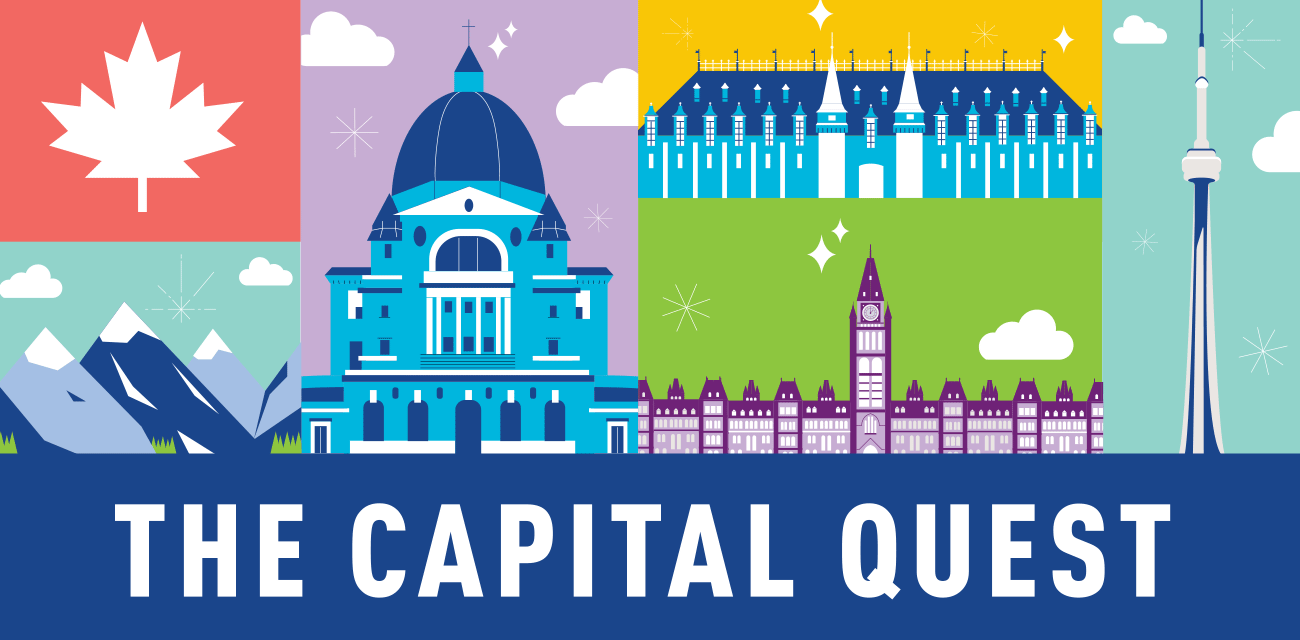Do you know about Canada's quest for the perfect capital? Not known to many, the official capital location moved 6 times before landing permanently in the city of Ottawa.
The Union of the Canadas in 1840, involved the merging of various colonies, including Upper Canada (now Ontario) and Lower Canada (now Québec). Before Confederation, these colonies operated under separate administrations with distinct political and cultural characteristics. Creating the Province of Canada prompted the need of a single capital city. Although a seemingly simple task, the pre-Confederation colonies of Upper and Lower Canada could not agree on a permanent site to establish this.
How and why did Ottawa become the ultimate winner in the capital game? Keep reading to find out.
Creating the Province of Canada prompted the need of a single capital city, however, the pre-Confederation colonies of Upper and Lower Canada could not agree on a permanent site to establish this.
The Evolution of Canada's Capital
The First Capital: Kingston (1841–1844)
When the Province of Canada was established, Kingston was initially selected as the capital city. Its location along the shores of Lake Ontario provided convenient access to water routes, which was particularly vital in the 19th century to facilitate transportation and trade. Another reason it was selected was Kingston held military significance as a major British military post during the War of 1812, with Fort Henry standing as a testament to its historical importance. The proximity to the United States also played a role, as Kingston's location was perceived as advantageous for defense against potential threats. Economically, Kingston was a thriving centre with a burgeoning commercial and industrial sector. However, Kingston's tenure as the capital was short-lived despite these merits.
The Central Choice: Montréal (1844–1849)
Driven by a desire to navigate the linguistic and cultural complexities resulting from the union of Upper Canada and Lower Canada, Montréal emerged as a seemingly neutral ground. The city's multicultural and bilingual character was viewed as a potential remedy to ease tensions between Anglophone and Francophone Canadians.
However, this chapter in Montréal's history as the capital was momentary. By 1849, unrest climaxed with the burning of Montréal Parliament Buildings. This was prompted by the tumultuous aftermath of the Rebellion Losses Bill, which was intended to compensate those affected by the Rebellions of 1837-1838, but ultimately heightened political and cultural tensions. Fierce protests in Montréal, particularly among English-speaking residents, and concerns about favouritism towards French-speaking Canadians fueled the decision to seek a more stable and neutral capital.
A Political Move: Toronto (1849–1851)
Emerging as a symbol of stability, Toronto was selected with the intention of addressing the political unrest within the newly united Province of Canada. The city's demographic balance was seen as a possible remedy to the continued linguistic and cultural tensions between Canadians and was selected in hopes of creating a more neutral ground for governance. The strategic central location of Toronto contributed to its appeal, fostering inclusivity by providing equal access for representatives from various regions. However, Toronto's role as the capital was also temporary.
Despite the initial hope for stability, political unrest persisted in Toronto. While more linguistically balanced, the capital still struggled to be a truly neutral ground for English and French-speaking Canadians. Additionally, Toronto's economic prominence and population growth contributed to disparities that fueled discontent. The perception of favouritism towards Toronto raised concerns about unequal representation and access to resources.
Over the next several years, tensions continued to pull favour for the location of the capital around to different cities until the rise of further government intervention settled the seemingly constant vacillation.
A Quick Change: Québec City (1851-1855)
Another short reign, Québec City served as the provisionary capitol of Canada between 1851 and 1855.
The Return: Toronto (1855-1857)
Toronto served as the capital once again until 1857 when Queen Victoria chose Ottawa as the new seat of government.
Queen Victoria’s Move: Ottawa (1857–present)
To the surprise of many, Queen Victoria chose to move the capital to Ottawa. The decision was strategicaiming to find a compromise between the warring factions of English and French Canadians. Additionally, Ottawa's location along the Ottawa River provided logistical advantages for transportation and defense.
The decision to make Ottawa the capital marked the beginning of its long-term significance. The city's central location within the Province of Canada, along with its proximity to the border with the United States, contributed to its suitability as a political hub.
In 1867, the Dominion of Canada was established, and Ottawa continued to serve as the capital. The city's role solidified further with the completion of the Parliament Buildings in the late 19th century. The impressive Gothic Revival architecture of these structures became iconic symbols of Canada's parliamentary system and notable landmarks that still distinguish the capital today.
Take a look at the Ottawa archives for a more detailed history of Ottawa becoming capital.
Why Ottawa Remains the Capital City
What contributed to a successful final choice for Canada’s capital? Ottawa's permanence as the capital can be attributed to several factors. The city's geographical location provides accessibility from various parts of the country, fostering inclusivity and representation. Additionally, the continuity of Ottawa as the capital contributes to national stability and a sense of identity for Canadians.
Over the years, Ottawa has grown into a vibrant and dynamic capital city, embodying Canada's values of diversity, inclusivity, and cooperation. While the journey to Ottawa was marked by shifts and adjustments, the capital's residence in this city stands as a testament to the resilience and adaptability of the Canadian nation.
Classroom Activity Idea: City Profile Project
Have students create profiles for each potential capital city, considering factors like geographical location, cultural composition, and economic significance. Discuss how these factors influenced the decision-making process. Encourage critical thinking about the impact on various groups within Upper and Lower Canada.
You can even conduct a mock debate where students negotiate and decide on the capital city while considering the various perspectives presented.
Want to visit the nation’s capital? Check out our Ottawa tours here. You can also visit one of the Canada’s former capitals of Kingston, Toronto, Québec City or Montréal on a Brightspark tour!



![Celebrating Earth Day in Canada [Classroom Resources]](https://www.brightsparktravel.ca/hubfs/BSCA/Blog/4321Z_ecology%20x%201920.jpg)


